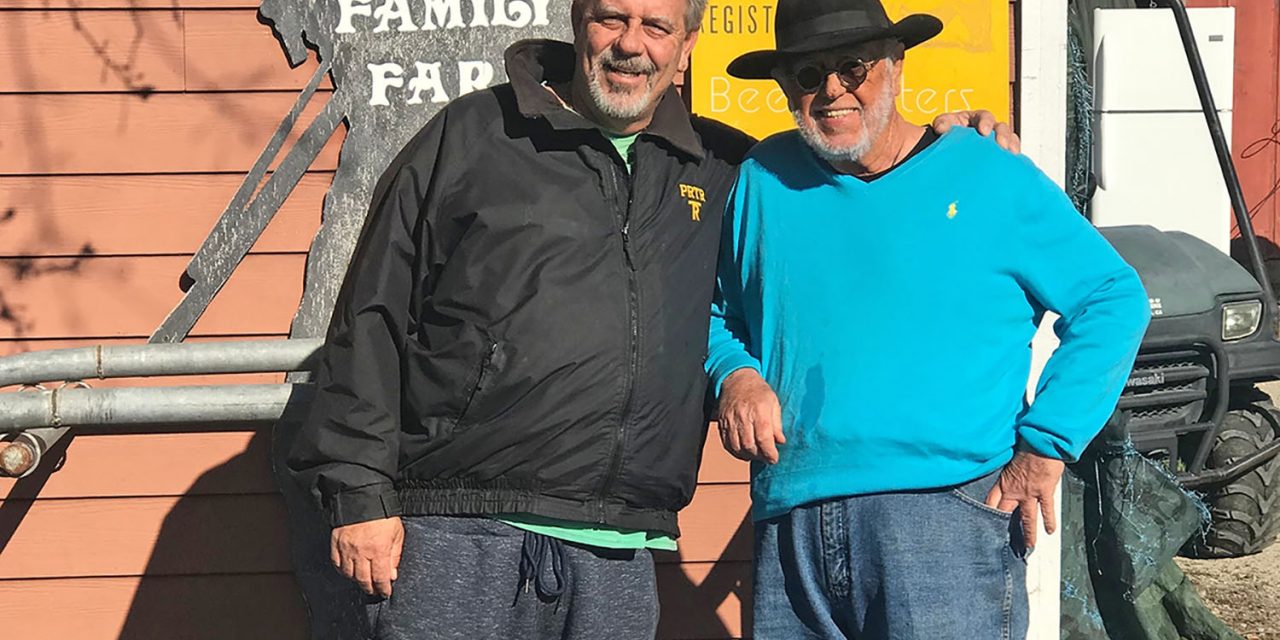SAN LUIS OBISPO COUNTY — The fate of hemp and cannabis farmers in San Luis Obispo County is an uncertain one. Since California State regulations went into effect on April 25, 2019, there has been nothing but conflict and apprehensions regarding farming the two crops.
Just a few weeks after farmers were able to apply for permits on May 1, 2019, to cultivate hemp, the county placed a temporary moratorium on June 18, 2019.
Marc Lea, a SLO County Ag Commissioner, said, “We got the 16 commercial growers, and nobody else can register unless the board passes a permanent ordinance which will supersede the temporary ordinance and that could be going to the board March or April — April 7 is the day that we heard”.
All of those 16 applicants are currently growing hemp for CBD oil use. In addition to the 16 growers who were accepted, Cal Poly and those farming for Ag research were permitted to continue growing hemp while the moratorium is in place.
However, 2019 was the last year for the majority of those farming under Ag research.
“We had nine different entities that were growing under the Ag research exemption in 2019,” Lea said. “That exemption has expired in the emergency ordinance. So they were supposed to stop at the end of 2019 calendar year.”
Because of changes at the state level regarding Ag research, most of those who were growing under this exemption will no longer qualify to do so. If they want to continue to grow hemp, they will most likely have to file as a commercial hemp farm if they do not follow the tighter regulations put in place by the state.
Anyone else looking to grow hemp in San Luis Obispo County will have to wait until the county supervisors agree on terms for a new permanent ordinance. The majority of the complaints that caused the moratorium were due to the odor coming from the plants and confusion on the difference between hemp and cannabis.
While hemp and cannabis are the same plants, they are two different varieties. Hemp is non-psychoactive because, if grown with the correct seed, it will contain less than 0.3 percent of THC, the compound in cannabis that gets users high. Hemp also has industrial uses and can be made into biodegradable textile materials such as clothing, rope, and packaging.
Cannabis will contain more than 0.3 percent THC and produce psychoactive effects. However, both plants look the same and create the same scent depending on the time of year (generally near harvest time).
Bret Finley, a cannabis farmer in the county, is also a stage four colon cancer survivor. He credits the usage of CBD and cannabis as the main reason he is alive today. He still uses CBD to cope with side effects from his chemotherapy treatments.
“I have some chemo-related issues that kill the nerves in your hands and feet, and it’s uncomfortable, so I’m trying to eat a lot of CBD to see if that is going to help me — so that’s what got me on the CBD train,” says Finley.
Finley and his family have already been in the medical cannabis business.
“We are in the process of obtaining our minor use permit from the county—we didn’t grow last year, we’re just kinda waiting, going through the process,” Finley said.
Cannabis cultivation follows different regulations than hemp and is still a federally criminalized drug. Farmers who want to grow cannabis must file for a license through the State and then a minor use permit from the county, which costs up to around $30,000. For those wanting to grow hemp in SLO county, they will have to pay a $900 fee for a permit. The Finleys applied to grow hemp under Ag research, but their research lab was considered “not valid.”
But will it be worth it for farmers to grow even if the supervisors agree to let the cultivation of hemp to continue in the county? Since its legalization, the market for CBD has become over-saturated with the product even though consumers have yet to see this price drop within their CBD products. It’s also been said many hemp growers in the area are keeping their product in storage, hoping the price will improve.
“Since it’s been on our farm bill and they opened up worldwide shipping,” Finley said. “They are farming in the Congo where they can cut the cost to farm CBD by 99 percent. Because of our labor here it’s pretty tough to be competitive in my opinion.”
Then again, all hope may not be lost for those looking to make an income from the production of hemp.
“There’s a whole other side of hemp nobody’s even looking at—it’s called fiber. Hemp clothes last twice as long,” Finley said. “So they’re going to start shifting a lot of this production in these predominant hemp states — they’re going to start switching over to fiber farming.”
While farming hemp for fiber is an entirely different process than for CBD, it is a space in the hemp market that has an abundance of untapped potential in the states. Fiber hemp is grown outdoors and harvested with specialized harvesters, similar to ones used for wheat.
For some, this industry is a new frontier, but until a new ordinance is placed this April, no one knows what the future holds for hemp farmers in San Luis Obispo County.












